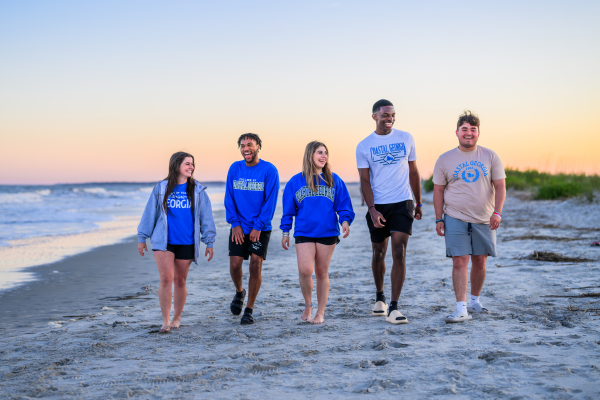- Home
- Reg Murphy Pubs
- Reg Murphy
- Heather Farley
- Doing “Right” by the Whales
Doing “Right” by the Whales
The excitement of another sea turtle season is upon us. Earth Day is coming up in mere days. But, the closing of our right whale season in Georgia has delivered some somber realities. The North Atlantic right whale is a well-known species in Coastal Georgia not because they are easily spotted, but because they are now so rare. Presently, there are only 360 right whales left, among whom only 70 are reproductive females. This small number means that the species’ survival depends on each successful birth during the calving season.
Births must outpace deaths for the species to persist, but females don’t become sexually mature until around age 10, they give birth to a single calf after a 12-month gestation, and females give birth on average every nine years. These factors add concern for the population’s continuation.
During the calving season, which spans from November through April in the Southeastern US, the coasts of Georgia and South Carolina become particularly active areas for calving. To reach our coast, these whales migrate from the Northeastern United States, encountering dangers such as boat strikes and entanglements in commercial fishing gear along the way.
Despite the birth of 19 calves this season, the species continues to suffer high mortality rates—four calves have already been lost this season. Two of those calves were found off Tybee Island and Cumberland Island respectively. Additionally, two young whales from previous seasons and an adult were all victims of vessel strikes or fishing gear entanglement, leading to death as well. According to the International Fund for Animal Welfare (IFAW), a stable right whale population requires 50 new births annually, while 20 signifies a productive breeding season. However, years of fewer than 20 new births could lead to extinction, with current models predicting the disappearance of the right whale by 2035.
Whaling, the initial major threat to the North Atlantic right whale, nearly drove the species to extinction by the 1890s. The abolition of whaling in the US in 1971 and in Canada in 1972, along with the Marine Mammal Protection Act of 1972 and the Endangered Species Act of 1973, mandated government protection for the whales and their habitat. However, the implementation of evidence-based solutions lagged.
The vessel strikes that have resulted in numerous right whale fatalities were preventable. Research indicates that limiting vessel speeds to 10 knots or less during calving season, in calving areas, could reduce ship strike mortality by 80–90%. Responding to this, the U.S. National Oceanic and Atmospheric Administration issued mandatory vessel speed restrictions in 2008 along the U.S. eastern seaboard. Location reporting on the part of vessels is meant to ensure compliance. Despite this, fatal vessel strikes persist.
As it stands, the 2008 vessel speed rule is the primary measure protecting right whales from vessel strikes, with minimal defenses against commercial entanglement. Unfortunately, the 2008 vessel speed rule was applicable in areas and at times during the season that these whales were most likely to be at risk in 2008 – 16 years ago. Since then, right whales have shifted their habitat due to climate change, and new data indicate that smaller vessels also pose a significant risk to the whales. It is likely that the deceased calf found on Cumberland Island this year was killed by a vessel between 35 and 57 feet long. The regulation no long suffices.
Conservation organizations along with NOAA have proposed to strengthen the 2008 rule to align with these new migration patterns and vessel sizes. That proposal has been mired in legislative and court delays for two years. These conservation organizations are not willing to wait. The IFAW, in collaboration with other stakeholders, are engaging in campaigns to improve outcomes for the species. They have developed a Whale Alert App to allow communication between mariners and the public who have spotted whales. It serves as an alert to recreational and commercial vessels alike to be cautious. They are also working on trials of more advanced fishing gear that could reduce entanglements.
These kinds of solutions – strengthening legislation, improving technologies, and improving communication with seafarers – may provide a viable path to the protection of the right whale. It will take not only rules and regulations, but the commitment and empowerment of those on the water to ensure that right whales can safely live, raise their young, and migrate through the waters they share with humans. We owe that to them and to future Coastal Georgians.
Dr. Heather Farley is Chair of the Department of Business and Public Administration and Associate Professor of Public Management at the College of Coastal Georgia. She is an associate of the College’s Reg Murphy Center for Economic and Policy Studies and an environmental policy scholar. The opinions found in this article do not represent those of the College of Coastal Georgia.
Reg Murphy Center






